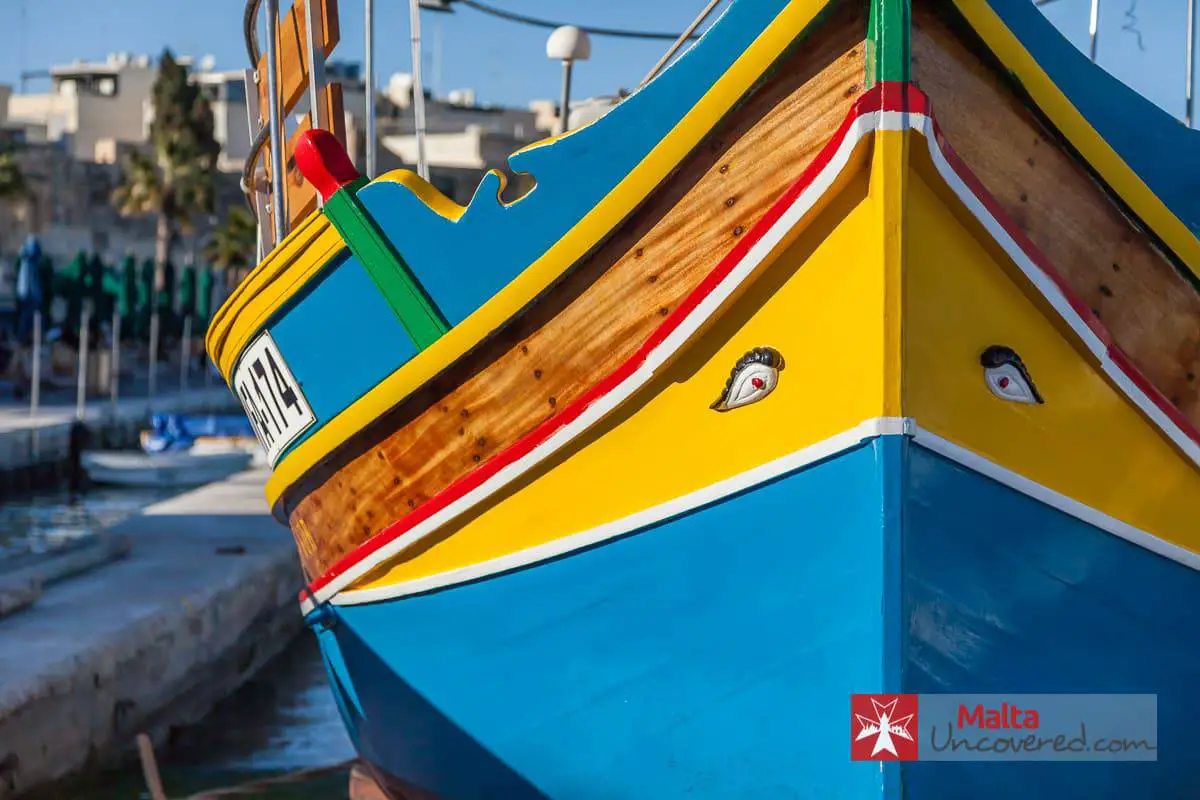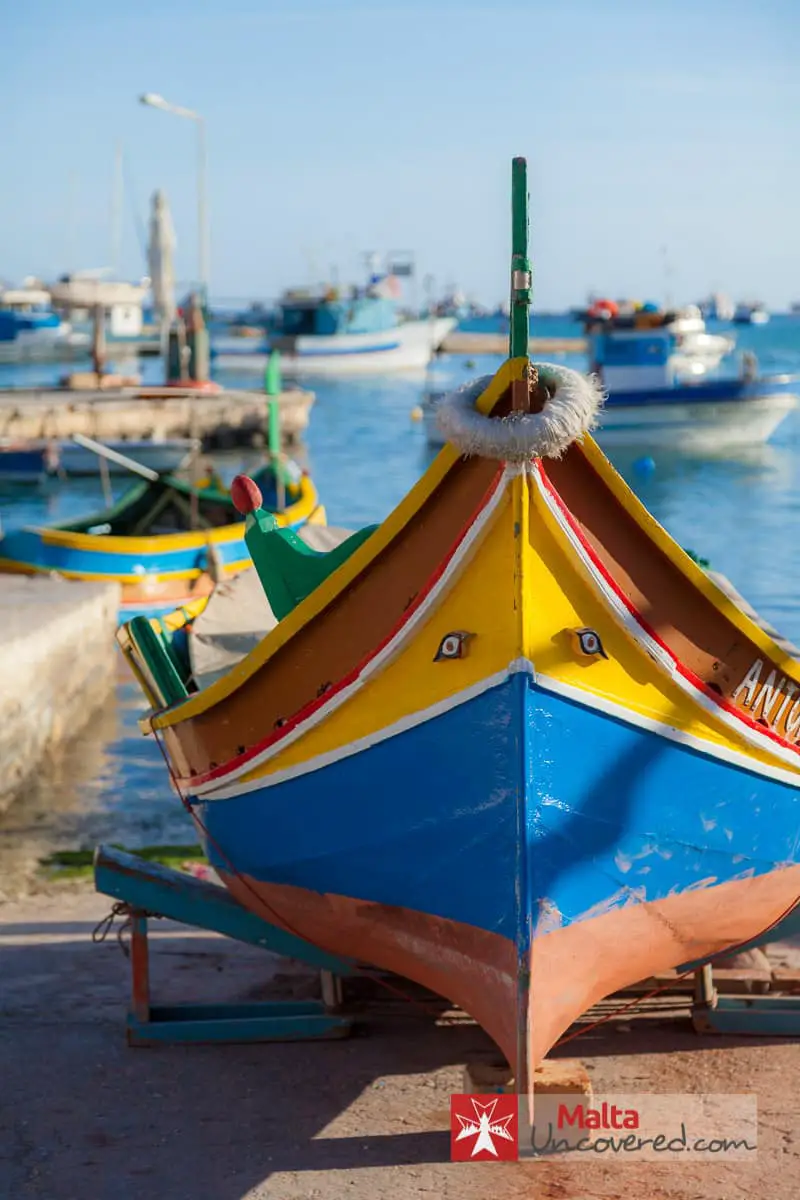Until a short time ago our justifiably famous Valletta Grand Harbour, so often the scene of the madness of war and the courage of men, was almost crowded with hundreds of boats and water taxis, which plied the harbour creeks on both sides of Valletta.
These were largely used to ferry passengers, especially sailors, from their ships to land, and vice versa. These colourful Maltese boats are referred to as Dgħajsa or Luzzu and are also used for fishing, these days often fitted with an inboard engine.
Save big on sightseeing with iSeeMalta, with hop-on/hop-off buses and boats, combo tickets for museums and the ferry to the Blue Lagoon!

Let us not forget that it was mainly from Malta’s shores that the invasion was launched that brought Italy to its knees in World War II. Indeed, the Second World War, unlike the First, was largely fought out in the Mediterranean basin. The battle for the control of the Mediterranean lasted for almost three years – from Italy’s entry into the war in June 1940 to the final surrender of Axis forces in Tunisia in May 1943. Never has our Grand Harbour been so busy as during that period. Malta had achieved an importance in world affairs, as it had done in 1565, quite out of proportion to its size. And the Grand Harbour was littered with Maltese luzzu boats in those days of war.
But the heydey of the dgħajsa is well and truly over and the number of these boats in Grand Harbour has dwindled considerably. This is due to several factors but certainly, the death blow came with the rundown programme of the British Forces in Malta in the late fifties and the diminishing size of the British Mediterranean Fleet.
The colourful dgħajsa has an equally colourful companion which is of considerably bigger dimensions: the luzzu. Like the Maltese cross, this is one of the symbols of Malta and is featured on the reverse of the older series of Maltese lira coins. The Mediterranean sea, which is ever present has, throughout the ages, made men excellent mariners and this ubiquitous sea has always attracted men to fish.
Like the dgħajsa, the luzzu is also a uniquely Maltese boat. Painted in the traditional colours of red, blue and yellow, it is a sturdy and reliable sea craft and can be put to sea in almost every kind of weather. Primarily, the luzzu is a fishing boat but it has other uses such as ferrying locals and tourists across the Grand Harbour.
Many luzzijiet (plural) have the eye of Osiris painted or carved on the bow, a symbol said to have been brought to Malta by the Phoenicians. This seems to suggest that craft of this type must have been common in the harbour since the time of the Phoenicians and Carthaginians.
It is hard to imagine a more tranquil and soul-satisfying sight than that of a dead-calm sea on a clear summer’s day when the Mediterranean is magnificent and regally serene, blue and seemingly infinite. The sight of a luzzu out at sea on such a day is truly beautiful.
Get my recommendations on the best day trips, boat trips, excursions and activities and book in advance!

Every fishing village in Malta and Gozo has its own luzzijiet. This Maltese fishing boat which is said to be of Sicilian origin, resplendent in glowing, vibrant colours, sits easily on the limpid waters of the enclosed harbours of the fishing villages. See a host of them in Marsaxlokk as they bring in their catch. You can also see a similar scene in Marsaskala, Birzebbuga and Wied-iz-Zurrieq. Many fishermen are now constrained to go and fish beyond the local shores to compete with foreign fishermen. The luzzu lies there motionless on its mooring rope, the boat’s reflection on the mirror-like surface is a perfect replica of itself.
It often happens that autumn and winter can be devastating to any craft left at sea. Yet, every year a number of over-optimistic owners leave their boats in the water too long after the calm summer months and a sudden, violent storm, of the familiar autumnal kind that suddenly appear in the space of an hour, lays waste the vessels at its mercy, leaving behind a sad spectacle of half-sunk, capsized and wrecked boats.
The wise fisherman starts thinking about wintering his precious boat early and arranging for its annual maintenance routine. Cracks that are found between the planks are filled in and the repaired area then repainted. The bottom of the hull is sanded down to remove the barnacles and other vegetation that clings to it, causing the boat to lose speed and an anti-fouling paint is applied. Within a couple of weeks, the boat is ready to go back into the water.
Every five years most fishermen give their boats a more thorough check-up. The old paint is completely stripped off to allow the fisherman a closer inspection of his craft, and often he will find that the odd plank here and there needs replacing and the joints between the planks need opening and resealing. Every single joint – and they run into hundreds throughout the boat – is patiently checked and those in need of attention filled.
For the smaller ones, putty is used but for the major joints, the gaps are stuffed with a thick gauze-like material called xoqqa and then liquid tar is used. This is left to dry and becomes solid after a few days, after which putty is applied and sanded and eventually the luzzu is repainted and restored to its original colourful splendour.
The luzzu is more or less a flat-bottomed boat. The choice of wood usually depends on the whim of the owner. The strakes, or continuous line of planking from stem to stern, are usually made of white deal (type of wood) while the inner works or the floor and side frames are made of ash and red deal. The main characteristics of this Maltese boat are the rather short stern, the moustaches, those triangular shaped spaces painted at the bows and stern which are found on all Maltese fishing boats, as well as the oculus, the eye of Osiris.
There was a time when the colour of the moustaches or mustaċċi on a luzzu indicated the fishing village where it was based. It is on the mustaċċi that the eye of Horus or oculi, sculpted in low relief or simply painted on, can be found. Floral motifs are also painted on by way of decoration and a name is always included with the decorations.
But these hardy men also hang olive branches which are blessed on Palm Sunday. For the evil eye lurking around every inlet is the same that drowns. The Phoenician oculus, the Christian olive branch. Every little helps. Like all seafarers all around the world, the Maltese fisherman is a very superstitious creature and the eye of Osiris is believed to be a protection from the evil eye, which many Maltese of the older generation but especially fishermen, still believe in.
Most luzzijiet are built in wood to a design that dates back hundreds of years, a fact proven by paintings dating from the 17th century which depict boats very similar in design and style to the modern luzzu. Like everything else the luzzu had its various stages of development. The original luzzijiet are said to have been rather small but they became larger in time. At first, they depended on oars, then sails and finally on a diesel engine. Each fisherman usually has his own colours, which previously belonged to his father and grandfather before him. These are very rarely changed, mostly out of superstition.
The gregale, or tempestuous northeast wind, which shipwrecked Saint Paul and Saint Luke on their way to Rome, still harasses these islands in winter. Few of these boats are lost in navigational hazards nowadays. But the sea eats them remorselessly. For the Mediterranean Sea is avaricious with its high salinity and humidity and its warm winters indulgent to the woodworm.
The sails are almost gone now from the sea except for those of yachtsmen. The luzzu chugs in and out under its heavy diesel engines, no longer confined to the ancient sailing season of May to September. But even without its sails, it remains typical of these islands.
After the maintenance is completed, the boat returns to the water and to work. Although this type of boat does not put out to sea in bad weather, on good days the fishermen will set off for their favourite fishing ground. When they return, hopefully bearing many kilogrammes of delicious Mediterranean fish with them, their boats again grace the little harbours of the fishing villages. And the scene is once again the wonderful, colourful and enchanting sight that makes Maltese fishing harbours so unique and unforgettable.

Check out my two guidebooks full of local knowledge and my best recommendations for your trip, and up-to-date for 2024!
Malta & Gozo guide book
Valletta: An Insider’s Guide to Malta’s Capital
Take the hassle out of planning your trip to Malta and be an informed traveller!

Edward is the Founder and Editor of Malta Uncovered and author of two guidebooks on Malta and Valletta.
As a tourist-turned-expat with Maltese roots, he knows the islands inside out and helps thousands of visitors enjoy a memorable trip every year.
Get the best travel tips from Malta Uncovered delivered to you in bite-sized chunks by email. (Unsubscribe at any time!)
Was this article helpful? Share it with your friends!
Get the most out of your visit to Malta with Malta Uncovered guidebooks – full of local knowledge and up-to-date for 2024!

the colors of the moustach, show the harbour, from where the luzzu is coming. eg. st pauls bay; red moustache.